Where the sea meets the mountains,
wind has been leaving its imprint since time immemorial.
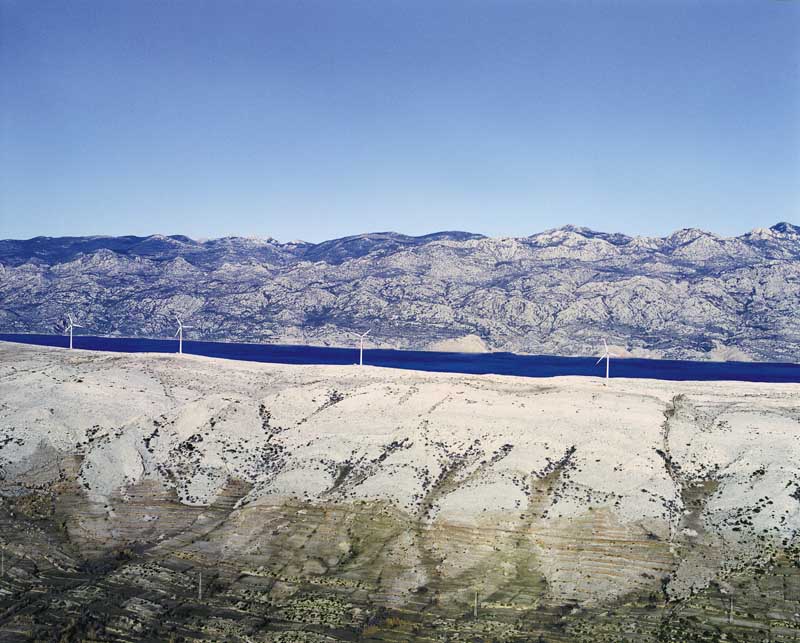
THE RAVNA WIND FARM ON THE ISLAND OF PAG
Ever since the earliest days of humankind, the forces of nature have been harnessed to cater for man’s needs. A mighty wind, "heaven's breath", has been revered throughout civilizations and ascribed divine attributes. After catching the wind in sails, people reached the New World and made the greatest nautical discoveries.
Thanks to technological advances, modern civilization has harnessed wind power, using it as a driving force and converting it into the noblest form of energy – electricity. This is the story of the first Croatian experience in harnessing the power of the wind to generate electricity.
www.adriawindpower.hr
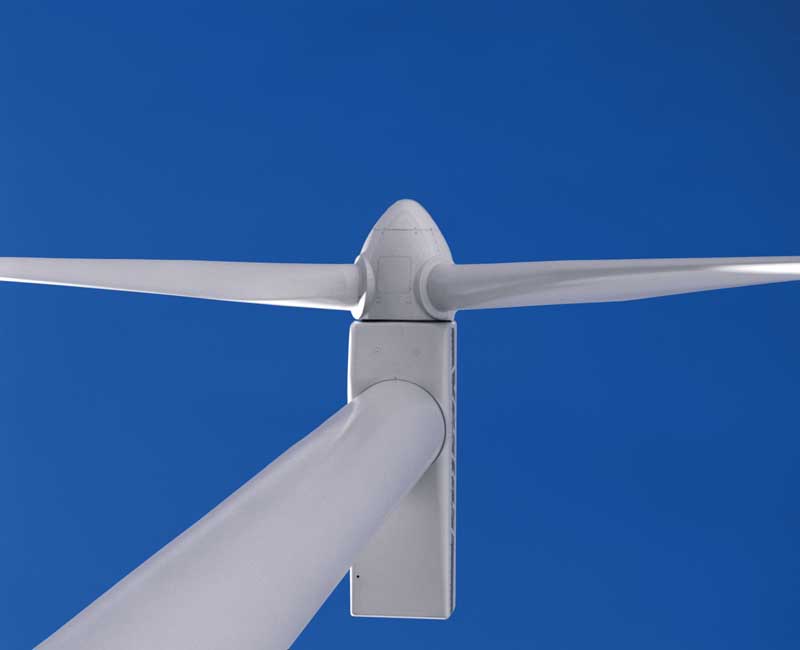
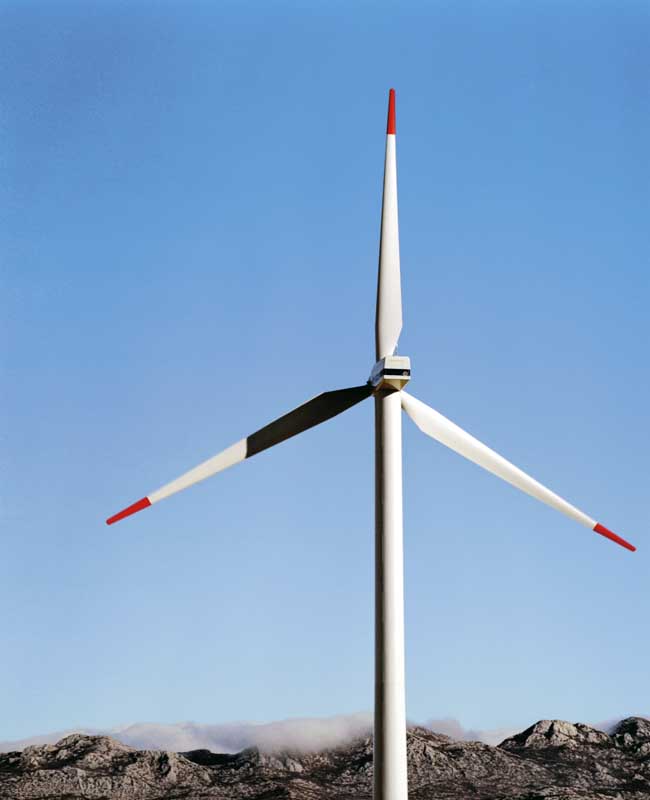

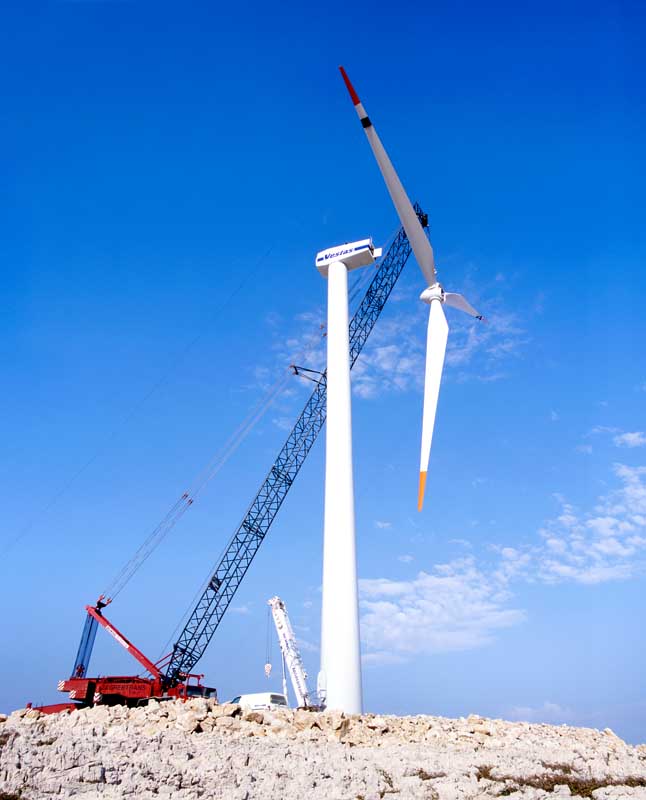 | 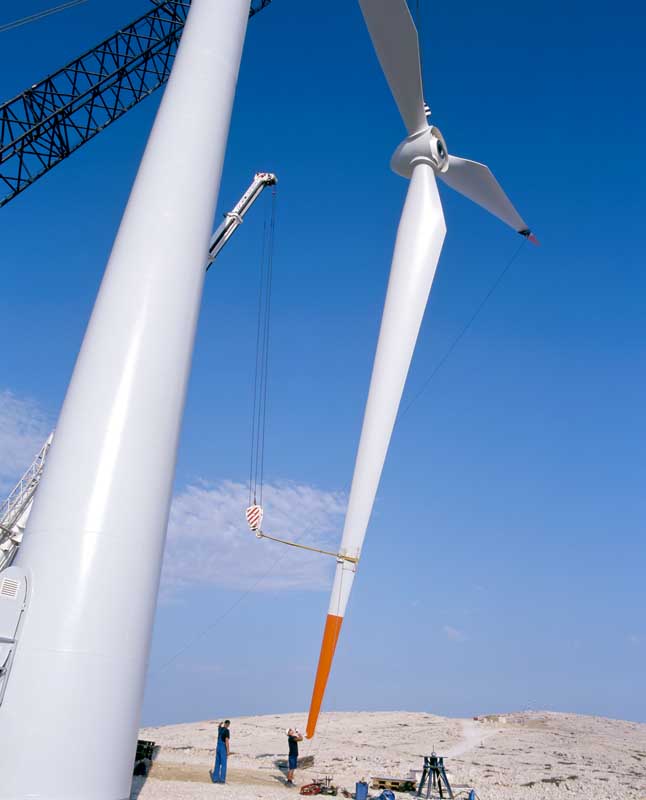 |
The story takes us to the island of Pag – an island famous for lace making. Owing to its ornamental karst formation, the island itself looks like lacework in the open sea. The bora, a north-easterly wind whose name in pre-Slavic means "cruel wind", constantly erodes its eastern coast, facing the Velebit Mountain.
Exposed to the fury of the "cruel wind" for eons and hammered by salt-laden waves, this part of the island was stripped bare. The bora structured its topography into a Moon-like landscape. This is the very place where the Adriatic winds, bora, sirocco, the north tramontana wind, the mistral, land breezes and levanter will drive the turbine blades of the first commercial wind farm in Croatia.
Embracing the initiative of Hrvatska Elektroprivreda, which continuously encourages private investment in small-scale power projects – small hydro and thermo and wind farms, the Croatian company Adria Wind Power constructed a wind farm rated at 5,950 kilowatts at the Ravna site on the island of Pag. Ravna is only one of the potential locations along the Adriatic coast suitable for wind-generation.
Years-long wind speed measurements at Ravna have confirmed that an average speed of 6.4 meters per second justifies the construction of the future wind farm, since such a site must have a minimum annual average wind speed of 5.5 meters per second to be considered economically viable.
19th of August 2004, Ravna site, on the island of Pag. The first commercial wind farm for electricity generation is being installed in Croatia above the Pag salt plains. Due to strong and frequent bora gusts exceeding 40 meters per second, a robust wind generator design was chosen. Generator manufacturer is the Danish company, Vestas. Since all equipment is prefabricated, on-site erection will take only three days. Two days will suffice for mechanical erection, one day will be enough to connect power cables and control cables.
Two point four meter-deep foundations measuring 11.5 x 11.5 meters were excavated, leveled, and reinforced by 19 tons of steel. Thirty concrete mixers continuously cast a total of 170 cubic meters of concrete to reinforce the foundations. A 4.5-ton heavy ring is embedded in a concrete foundation plate for tower connection. The reinforced steel foundations weigh 483 tons, 850 tons together with backfill material.
A transformer house was constructed adjacent to the tower foundations to transform the V 52 Vestas wind generator voltage to a higher, distribution level. At the point of wind farm's connection, electricity will be fed into the distribution grid in accordance with the Interconnect Agreement with the Distribution Service Area "Elektra Zadar".
Cable ducts are being excavated here on rocky ground to accommodate 4,500 meters of cables with a cross-section of 3 x 185 square millimeters, and 3,800 meters of fiber optic cables.
A 5,500 meter-long and 4.5 meter-wide access road was constructed to enable the delivery of large equipment by heavy trucks. Now, nothing stands in the way of equipment acceptance.
Two construction cranes, one weighing 400 tons and the other 60 tons, are erecting the tower.
While the larger crane hoists a segment of the tower, the smaller one supports the segment in order to mount it without touching the ground. The tower consists of two segments, the first segment being 23 meters long and the second 24 meters long. It weights a total of 51 tons, with a 3.3-meter bottom diameter and 2.2-meter top diameter.
Tower erection is completed and now the mounting of the wind generator head is in progress.
Blades are assembled to the rotor hub on the ground. Glass fibre reinforced plastic blades are
25.3 meters long and weigh 1.9 tons, without bearings. A 52-meter diameter rotor weighs 10 tons.
The swept rotor area is 2,124 square meters, and its rotation speed ranges from 14 to 31.4 revolutions per minute. Blades are connected to the hub containing three flanges and encased in a plastic shield that improves its aerodynamic properties. The crane lifts the rotor, which is then attached to the main shaft, and the mechanical assembly is completed.
The site houses seven wind generators, each of 850 kilowatts.
The company Adria Wind Power will sell all the generated electricity to Hrvatska Elektroprivreda, except for those quantities required for auxiliary on-site supply. When the wind farm is inoperative, Hrvatska Elektroprivreda will supply electricity for the plant's needs under effective tariff rates.
There is no doubt that the wind farm prospect will become a new symbol of the island of Pag – the island of winds, salt, lace and stone. Although wind power was used as early as three thousand years ago to grind grain and to pump water, it seems that its power has now been rediscovered. The past decade witnessed an explosive growth in wind farm construction, especially of those feeding generated electricity into the power grid. And no wonder. Global climate change and a disturbed natural balance are real causes for concern. Efforts are being intensified to reduce our reliance on fossil fuels, primarily oil. Wind power has bright future prospects. Global onshore wind potential has been
estimated at between 20,000 and 50,000 terawatt hours a year. Offshore wind energy is a promising application of wind power, considering the great wind potential in open seas. In view of total worldwide electricity consumption, which in 2000 amounted to 13,200 terawatt hours, it is evident that wind power is gaining in importance as an emission-free, locally available and inexhaustible source of energy, which reduces the country's reliance on energy imports.
On the other hand, wind energy is unpredictable. This is a limiting factor from the point of view of power system management, and represents an obstacle to wider exploitation of wind power for electricity generation purposes. Since adequate reserve capacities should be made available in the system beforehand, wind-generated electricity is relatively more expensive compared to traditional electricity generation technologies. A number of developed countries have recognized the long-term benefits from wind-generation - Germany, Spain and Denmark in particular. However, in those countries wind energy receives large government subsidies that offset the higher purchasing price of wind-generated power and which stimulate such generation.
The costs of wind energy are expected to fall in the future, as a result of further commercialization of high capacity wind generators. By the year 2010, EU member states will have to increase the share of renewables in their overall power balances.
Hrvatska Elektroprivreda, a national power company, meets the requirements to adjust itself to EU practices. A more than fifty percent share of hydro in her power system is an advantage in meeting this end. In cooperation with private investors, Hrvatska Elektroprivreda has contributed to the construction of the small Čabranka and RoÅ¡ki Slap hydro plants, and the small Pliva and JakuÅ¡evac thermo facilities, burning natural and landfill gas. Adria Wind Power accepted the challenge of the wind. Soon, other companies developing wind power projects in Croatia will be traveling the same road. There will be other prospects resembling that of the island of Pag. Wind power engineering in Croatia is a new field of activity that can build upon domestic knowledge, expertise and engineering. Where the sea meets the mountains, wind has been leaving its imprint since time immemorial. And there is sufficient wind here to drive all future wind farms.
www.adriawindpower.hr